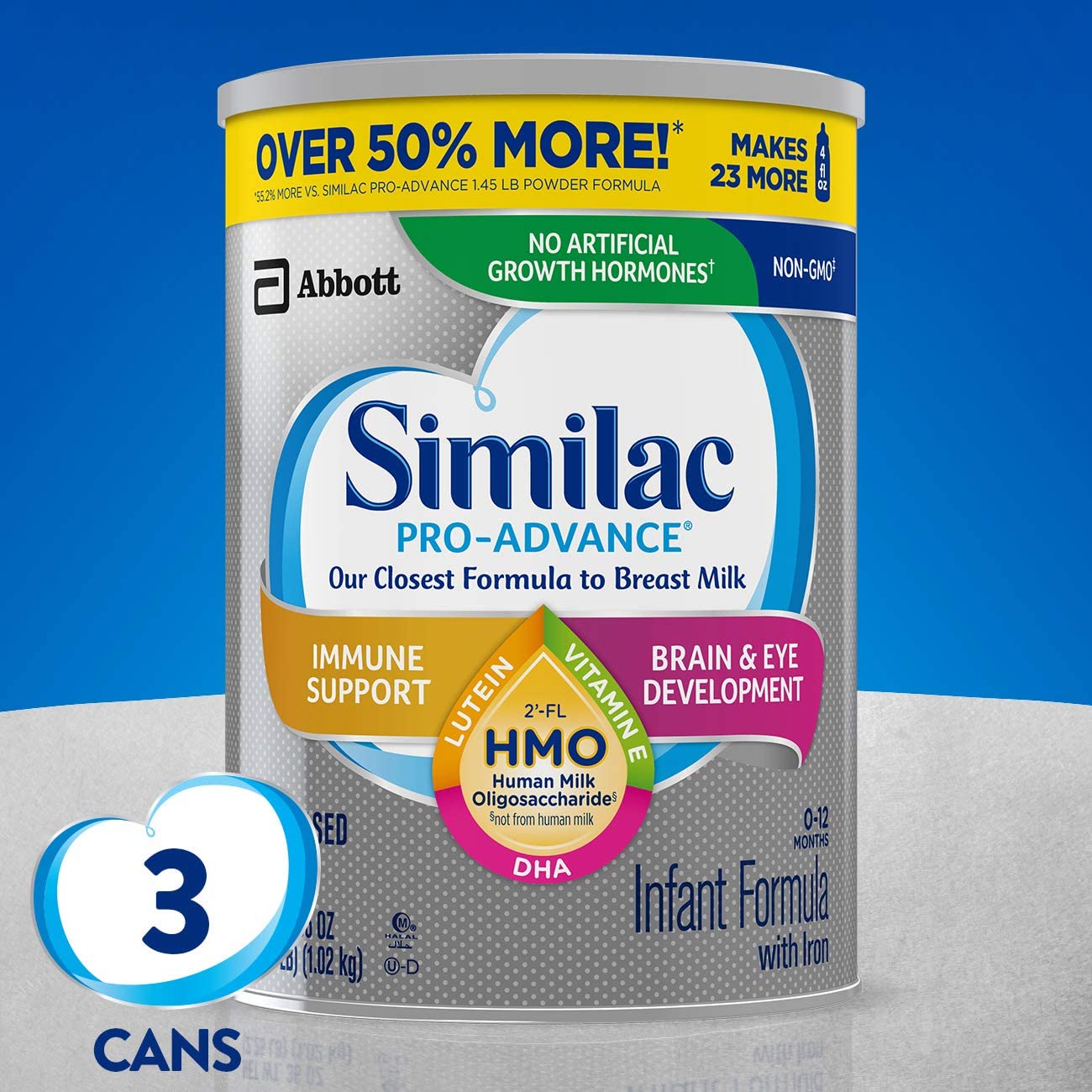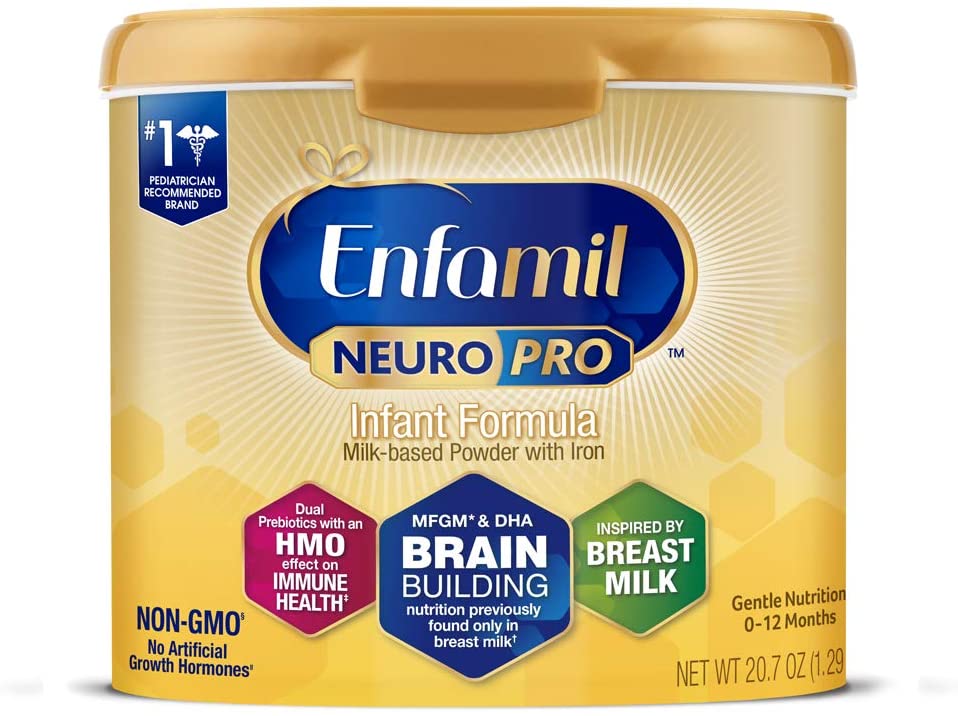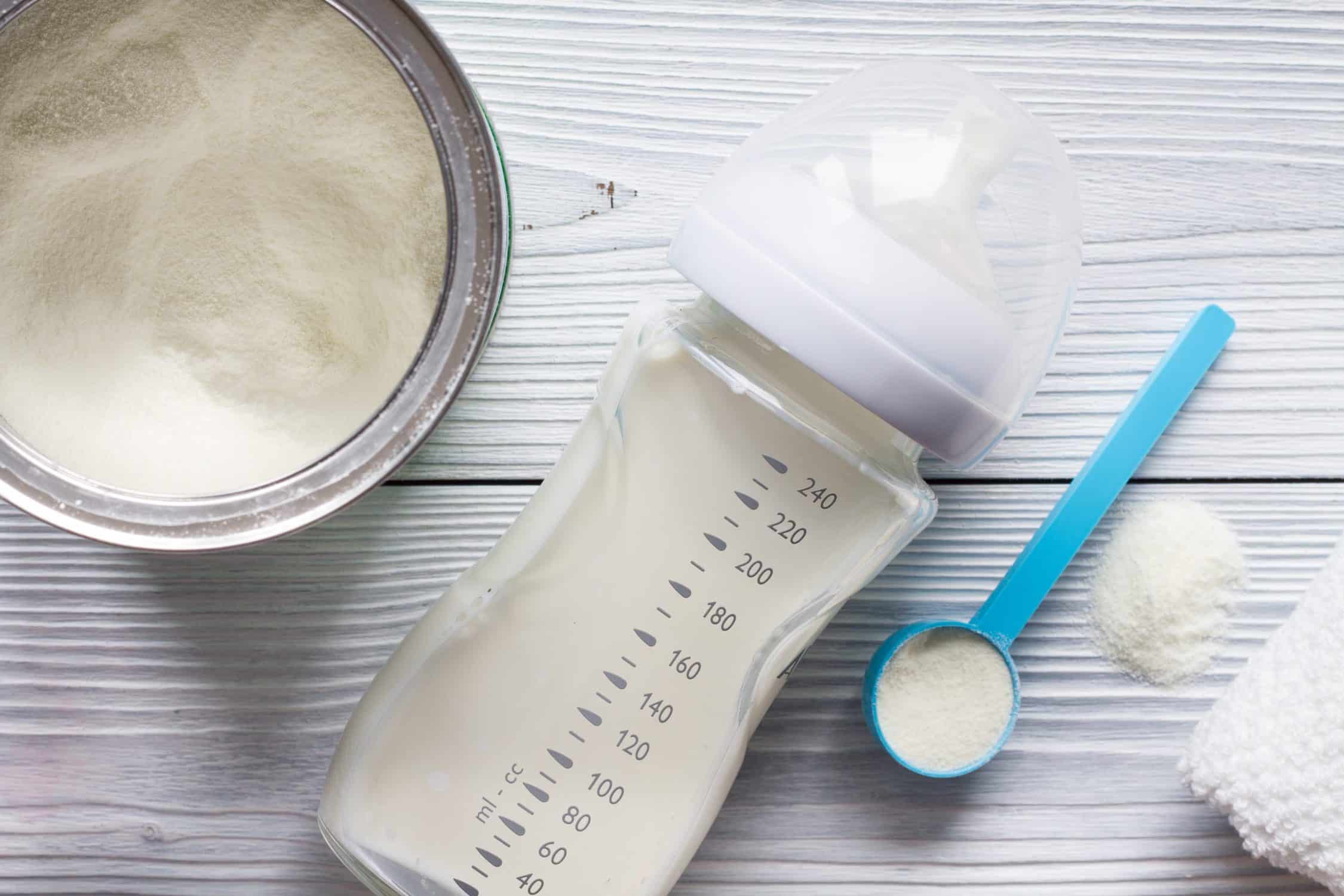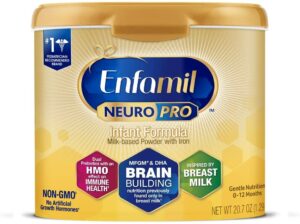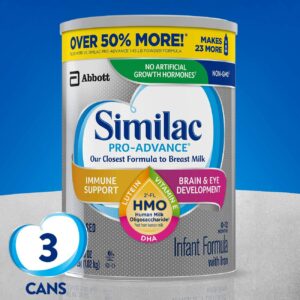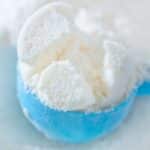We know you have a busy life, if you’re in a hurry we’ll save you time and let you know we chose Enfamil as the best baby formula brand. Both brands have good qualities but we felt that Enfamil had fewer sugars in its formulas and the ingredients used more closely mimic real breast milk.
Choosing the right formula for your baby is a really difficult decision. At the end of the day, this is what is going to provide your child with the nutrition that they need to grow and develop. For the first few months of their lives, this will be their only source of food and water. Enfamil vs Similac is a common topic when choosing which brand of formula to give your baby.
It is important to remember that there is no magic brand that will be suitable for every baby. You may spend hours doing your research and think that you have picked the perfect formula only for it to not agree with your baby. But there is no need to panic there are plenty of options available within each brand if you are set on one particular brand. If you are not then there are other brands that may be more suitable for your baby.
View in gallery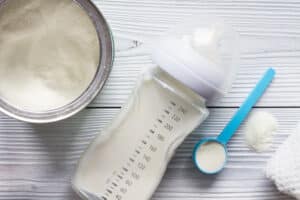
No matter which brand you decide on, remember that every formula no matter the brand sold in the USA has to meet minimum nutritional standards set by the Food, Drug and Cosmetic Act and FDA regulations. This does not mean that they are all identical but it does mean that they all have met those minimum standards.
In a Hurry? Here is Our Top Pick!
| Title | Price | Prime | Buy | |
|---|---|---|---|---|
Top | Enfamil NeuroPro Baby Formula | PrimeEligible | Buy Now | |
 | Similac Pro-Advance Non-GMO Infant Formula | PrimeEligible | Buy Now |
The Types of Baby Formula
Within each brand, there are many different choices to cater for babies with different needs. These include breast milk-based formula, lactose-free formula, soy formula, and premature baby formula.
View in gallery
Breast Milk Based formula
Formulas that are based on breastmilk. These offer the closest replica of breastmilk that is possible. Many now include similar fats that were once exclusively found in breast milk. Fats such as MFGM which is shown to support cognitive development in infants. Or probiotics such as 2′-FL HMO which helps support your baby’s immune system.
- Emerging evidence from a recent clinical study showed MFGM in formula supports cognitive development similar to breast milk
- Get brain building nutrition inspired by breast milk from the formula brand thats #1 recommended by Pediatricians
- The only formula that has a fat protein blend of MFGM and DHA, previously only found in breast milk
Prices pulled from the Amazon Product Advertising API on:
Product prices and availability are accurate as of the date/time indicated and are subject to change. Any price and availability information displayed on [relevant Amazon Site(s), as applicable] at the time of purchase will apply to the purchase of this product.
Gentle Formulas
If your baby is not feeding comfortably on breast milk formula you may need to look for something that is gentler on their tummy. This would mean that they have a lower percentage of lactose which can often be the cause of fussiness in babies.
- Contains one 19.5 ounce reusable tub of baby formula milk powder
- Enfamil NeuroPro Gentlease is the only sensitive baby formula that has a fat protein blend of MFGM and Omega 3 DHA, previously only found in breast milk, that is clinically proven to reduce fussiness, colic, baby gas, and crying in 24 hours
- Emerging evidence from a recent clinical study showed MFGM in baby formula provides cognitive brain support similar to breast milk
Prices pulled from the Amazon Product Advertising API on:
Product prices and availability are accurate as of the date/time indicated and are subject to change. Any price and availability information displayed on [relevant Amazon Site(s), as applicable] at the time of purchase will apply to the purchase of this product.
Lactose Free Formulas
Some babies simply can not tolerate the lactose in baby formula and need a lactose free formula. If you find that your baby is in this category, there are many brands that offer a lactose free version of their formula.
- Contains 4:19.5 ounce containers of baby formula milk powder (Total = 78 ounces)
- Enfamil NeuroPro Sensitive is an easy to digest baby formula for brain support, specifically designed for sensitive tummies and lactose sensitivity
- The only sensitive baby formula with the brain support benefits of NeuroPro, a fat protein blend of MFGM and omega 3 DHA previously only found in breast milk
Prices pulled from the Amazon Product Advertising API on:
Product prices and availability are accurate as of the date/time indicated and are subject to change. Any price and availability information displayed on [relevant Amazon Site(s), as applicable] at the time of purchase will apply to the purchase of this product.
Added Rice Starch Formulas
Babies that suffer from Acid Relux may require a formula that has a thicker consistency. This is often done by adding rice starch to the formula. This thicker formula doesn’t come back up so easily and lowers the spit-up rate. Helping your bay hold on to its milk helping them to grow and thrive.
- Clinically proven to reduce spit-up by over 50% in 1 week
- Enfamil A.R. spit up baby formula with Iron is a gentle milk powder formula clinically proven to reduce spit up by over 50 percent in 1 week
- Gentle, complete nutrition tailored for your baby through their first 12 months
Prices pulled from the Amazon Product Advertising API on:
Product prices and availability are accurate as of the date/time indicated and are subject to change. Any price and availability information displayed on [relevant Amazon Site(s), as applicable] at the time of purchase will apply to the purchase of this product.
Soy Formulas
Some babies require a soy formula, this may be due to lactose intolerance, milk protein allergy or galactosemia. There are many available on the market these days as the popularity for soy formula has increased.
- Contains 4 22 ounce containers of baby formula soy milk powder (Total = 88 ounces)
- Enfamil ProSobee baby formula is a dairy and lactose free soy plant protein alternative to milk based formula
- Helps reduce fussiness, baby gas, and colic caused by sensitivity to milk based formulas, with plant protein powder that is naturally easy on sensitive tummies
Prices pulled from the Amazon Product Advertising API on:
Product prices and availability are accurate as of the date/time indicated and are subject to change. Any price and availability information displayed on [relevant Amazon Site(s), as applicable] at the time of purchase will apply to the purchase of this product.
Premature Baby Formulas
When babies are born prematurely they need more calories and additional nutrients that they would otherwise have received in the womb. If you have a baby who has a low birth weight, they may also fall into this category even if they were not premature.
- EXPERTLY DESIGNED NUTRITION to support catch-up growth and cognitive development
- CLINICALLY PROVEN to promote catch-up growth similar to full-term breastfed infants.
- MILK-BASED, 22 CAL/FL OZ formula with enriched nutrition and a blend of nutrients to help babys immune system
Prices pulled from the Amazon Product Advertising API on:
Product prices and availability are accurate as of the date/time indicated and are subject to change. Any price and availability information displayed on [relevant Amazon Site(s), as applicable] at the time of purchase will apply to the purchase of this product.
Toddler Formulas
Even though most toddlers can transition to cows milk, many parents choose to remain on formula after they are 12 months old.
- BRAIN DEVELOPMENT Enfagrow Premium contains expert recommended omega 3 DHA and iron two building blocks of a toddlers brain
- IMMUNE HEALTH Enfagrow Premium has dual prebiotics and is fortified with vitamins and minerals to help support immune health. Made with real milk
- GROWTH & DEVELOPMENT contains calcium, vitamin d, zinc and 19 other nutrients—to help support growth and development and complement a toddlers diet
Prices pulled from the Amazon Product Advertising API on:
Product prices and availability are accurate as of the date/time indicated and are subject to change. Any price and availability information displayed on [relevant Amazon Site(s), as applicable] at the time of purchase will apply to the purchase of this product.
Differences in Baby Formulas
There are some differences between formulas’ that you may notice. Many contain coconut oil as an alternative source of fat to palm olein oil. Two formulas that appear to be identical may use prebiotics while the other uses probiotics. One formula may contain MFGM while the other contains 2′-FL HMO.
A few other differences that you may consider are:
- DHA and ARA
- Prebiotics
- Probiotics
- Antioxidants
- Organic Ingredients
Calories, Fat, Carbs and Protein
To help you make a decision between Enfamil vs Similac you may like to consider the differences in the major nutrients that are contained in their formulas. The four main ones that you are looking at in baby formula are calories, fat, carbs and protein. Lets’ take a look at two choices available from Enfamil and Similac- Enfamil NeuroPro Infant and Similac Pro Advance.
Enfamil NeuroPro Infant
- 20 calories per ounce
- 5.3g of fat per 100 calories
- 11.3g of carbs per 100 calories
- 2g of protein per 100 calories
Similac Pro-Advance
- 20 calories per ounce
- 5.60g of fat per 100 calories
- 10.5g of carbs per 100 calories
- 2.07g of protein per 100 calories
Vitamins and Minerals
The next thing you will want to compare is the vitamin and mineral content in the baby formula and how this differs. There are some similarities and there are some differences. Both products contain the same amount of Vitamin A (300g per 100 calories), this is necessary for proper development and growth.
Differences that you should note are:
Enfamil
- Enfamil contains higher levels of Vitamin C, K and E.
- Higher amount of pantothenic acid.
Similac
- Similac contains higher levels of Vitamin D, Thamin and Riboflavin.
- Better source of Copper and Iron
Enfamil vs Similac a Look at Their Formulas
Lets’ have a closer look at the similar products on offer from both Enfamil and Similac. We will compare them to see what the similarities and differences are.
Related Article: Similac Alimentum Side Effects – Common Issues Babies Experience
Enfamil NeuroPro Infant vs Similac Pro-Advance
These are the standard formula offered by both Enfamil and Similac. If your baby has no allergies or health issues this will be the formula you will start with. They have all the vitamins and nutrients to encourage healthy growth and development in your baby. Enfamil NeuroPro Infant and Similac Pro-Advance are two of the most popular choices of baby formula.
Similarities
- Both use non-GMO ingredients that have not been genetically engineered.
- Neither uses added sugars.
- Similac and Enfamil use DHA whihc is clinically proven to support mental, visual and immune system development.
Differences
- Enfamil use a fat protein blend of MFGM and DHA which is brain building nutrition inspired by breast milk.
- Similac have added 2′- FL HMO prebiotic for immune support.
- Similac also do not use palm olein oil.
Enfamil NeuroPro Gentleease vs Similac Pro-total Comfort
Both these products are designed for babies who are suffering from gas, fussiness and crying. They are designed to be gentle on their little stomachs and help to alleviate these issues.
Similarities
- Both contain the same amount of protein, vitamin A and vitamin D.
- Both offer a non-GMO version
Differences
- Enfamil uses partially hydrolyzed nonfat milk and whey protein concentrate solids from soy to make it easier for delicate tummies to digest.
- Enfamil uses a specially formulated fat protein blend of MFGM and DHA.
- Similac has an exclusive blend of DHA, Lutein and vitamin E which supports brain function, eye health and developing cells.
- Similac also has a higher amount of Linoleic Acid.
Enfamil Nutramigen vs Similac Alimentum
Both Enfamil Nutramigen and Similac Alimentum are designed for babies that are showing colicky symptoms due to a cow’s milk protein allergy. Your baby may have a very mild allergic reaction to cow’s milk protein, and others may have an extreme reaction and be totally incapable of digesting cow’s milk protein.
Enfamil Nutramigen states that it can relieve the colic symptoms in 90% of babies from cow’s milk allergy in 48 hours, while Similac Alimentum states that it starts reducing excessive crying due to cow’s milk allergy in most infants within 24 hours. Both ensure that this is done while still providing all the necessary vitamins and minerals required.
Similarities
- Both use casein hydrolysate which is broken down into smaller sizes. This makes them easier to digest although still made from cow’s milk protein.
- Both also use sugars, as these are a form of simple carbohydrates and are easier to digest than more complex carbohydrates. Enfamil uses corn syrup solids while Similac uses corn maltodextrin.
Differences
- Enfamil uses a modified corn starch to thicken its formula.
- Similac has a slightly higher Linoleic Acid content and also uses additional sugars as well as the corn maltodextrin.
- Similac also states the Potential Renal Solute Load in its formula, this is the amount of dietary nitrogen, sodium, potassium, chloride and phosphorus that requires excretion by the kidneys,
Enfamil A.R. vs Similac For Spit-Up NON GMO
Enfamil A.R and Similac For Spit-up are both designed for babies that spit up more than the average baby. Enfamil claims that it can reduce spit-up by over 50% while still providing complete nutrition, many of their reviews confirm this claim too. This may be because they add two prebiotics to help support digestive health in your baby.
Similac claims that it can reduce frequent spit-up by 54%. It does use a few different types of sugars in its formula, this may be something to note.
Similarities
- Both contain sugars in their formula
- Both use rice starch as a way to thicken their formula
Differences
- Enfamil contains 2 prebiotics while Similac only contains 1 prebiotic.
- Similac uses corn syrup plus additional sugars.
Enfamil Prosobee vs Similac Soy Isomil
If you are searching for a milk-free formula that is soy-based then both Enfamil Prosobee and Similac Soy Isomil. They would both be great choices and are gentle on little tummies that struggle to digest lactose.
Both of these are also a great option for those families that wish to avoid animal-derived products such as vegetarians or kosher.
Parents may lean towards using Enfamil ProSoBee as it contains less sugar unlike the Similac Soy Isomil that has extra added sugars.
Similarities
- Both provide the complete nutrition that your baby requires.
- Both list corn syrup solids as their first ingredient.
- Both also use soy protein isolate in order to avoid all milk-based products
Differences
- Similac has a slightly higher amount of Linoleic Acid and also has a higher fat content per 100 calories.
- Enfamil uses palm olein in its formula.
Enfamil NeuroPro Enfacare vs Similac Neosure
When your baby is born prematurely they have some catching up to do. Both Enfamil NeuroPro Enfacare and Similac Neosure provide a formula that has increased protein, vitamins and minerals to help your baby catch up.
Similarities
- Both have similar protein, fat, carbohydrate and Linoleic Acid contents.
- Both use corn syrup solids as their sugar.
Differences
- Enfamil has its unique blend of MFGM and DHA that was only found in breast milk. This has been shown to support cognitive development.
- Enfamil contains a higher amount of vitamins A, D and E.
- Similac contains a much higher amount of Niacin which is involved in the metabolism of fats.
Enfamil Enfagrow Premium vs Similac Go and Grow
Once your baby reaches a year old they can then be transitioned on to cows milk as long as there are no underlying health issues or allergies. Both Enfamil Enfagrow Premium and Similac Go and Grow provide a great nutritional base to continue to help support your growing toddler.
Similarities
- Both contain DHA to help nourish brain development.
- Both contain two types of probiotic
Differences
- Enfamil has 2 x the DHA and 30% less sugar than Similac
- Similac does not contain palm olein
FAQ about Enfamil vs Similac
Why use baby formula?
If you have decided not to breastfeed or are unable to do so, then formula is the next best thing.
Formula provides babies with the nutrients that they need to grow and thrive.
When can I give my baby cows milk?
Official guidelines recommend that parents wait until babies are between 9-12 months before introducing cows milk. Before this age it is not an appropriate substitute to formula or breastmilk.
How much formula does my baby need?
During the first 4-6 months, before your baby begins solids there is a simple guideline.
Offer 2.5 ounces of formula per pound of body weight each day, with a maximum of 32 ounces. For example, if your baby weighs 6 pounds, you’ll give her 15 ounces of formula in a 24-hour period.
Not all babies are the same and some will take more or less than the guideline above.
How will I know if my formula-fed baby is hungry?
After a few weeks’ you will get to know the signs that your baby is ready to feed. Your baby will start to get restless, they may begin turning their head and open their mouth, this is called rooting. You may find that they’ll find something to suck on, this is usually a fist or fingers.
How do I know if my baby is getting enough formula?
Your baby’s weight gain and the number of wet and dirty diapers that they are producing is always a good indication of whether they are getting enough formula.
From a few days after birth, your baby should be getting around 6 wet diapers a day. Diapers should be soaked through with clear or pale yellow urine, or feel heavy.
For the first few days after birth, your baby will pass a dark sticky substance known as meconium. Once the first week has passed their stool should then be a pale yellow or yellowish brown color.
Your baby will be weighed at birth and again a few days later. Babies do tend to lose some of their birth weight in the first few days after birth.
Your baby should be putting on weight gradually, this is a good sign that they are getting enough nutrition and formula.
Enfamil vs Similac which comes out on top?
Making a choice between Enfamil and Similac as a brand is a tough decision. Both brands offer some great formula with their own individual combinations of prebiotics and other unique ingredients. Both will support your baby and ensure that they thrive and grow.
Both meet the nutritional requirements set up by the Food, Drug, and Cosmetic Act and FDA regulations.
Personally I would choose Enfamil due to the fact that they use fewer sugars in their formula. They also have added MFGM and DHA in combination, this is something that was previously only found in breastmilk. This has been clinically shown to improve developmental milestones but he time your baby turns one year old.
If you are feeling unsure about which formula to choose, you can talk to your pediatrician. They can offer better advice as to which formula they think is the best fit for your baby and their individual needs.
